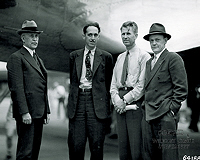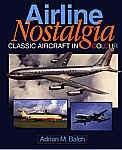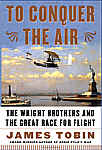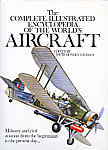
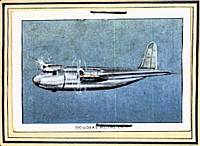
Douglas DC-5
"the forgotten Douglas"
In my misspent youth, for years I had a marvelous worked-open poster-sized drawing of the plane over my bed. Who knows what it would have been worth now (but I wouldn't sell anyway).
Reason I got it somehow must have been that, of the only 12 (or is it 16?) DC5s ever built, KLM bought the first two for their West-Indian operations, where I misspent those same golden years. The one below actually has a Netherlands Antilles registration, PJ-AIW, but it was called Wakago, a Surinam bird, a.k.a. little chachalaca (Ortalis motmot), a relative of the curassow bird. This may be the same aircraft as PH-AXB Boschduif. Presently I don't know any other names or registrations.
Like the DC3 Dakota, it was designed by Don Incoll, who was afraid to fly himself; all his designs are noted for sturdy reliability. He went back to 2 engines (the DC4 had four), but did use the tricycle landing gear like the DC4 had.
The DC5 has been in use with KLM West Indian operations until 1942, after which they switched to DC3 and DC4, while also using the Fokker XVIII and Lockheed Electra.
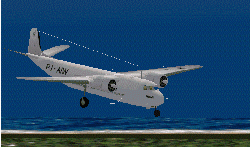
The Wakago touching down at Curaçao Hato airport?
Hardly. From a model for MS Flight Simulator
Download here from Simviation
The DC-5 was designed in the Douglas Aircraft Company's El Segundo plant as a short-distance transport. It is characterized by its high wings with landing gear affixed to the engine nacelles. The airplane was available with Pratt & Whitney R-1690 or Wright Cyclone engines.
The prototype with Cyclone engines made its first flight in 1939 with Carl Cover at the controls. The first buyers were KLM, Holland (4), Pennsylvania Central, USA (6) and CADTA, Colombia (2). The start of WWII was a setback, resulting in delivery of the four planes for KLM only. The first two flew the route Paramaribo-Curaçao, and the other ones were operated from Batavia (now Jakarta, Indonesia). All four were used for the 1942 evacuation of civilians from Java to Australia, during which one was damaged on Batavia Kemajoran airport, after which it was tested in Tachikawa by the Japanese. The three remaining aircraft were kept in service by the Allied Directorate of Air Transport, Australia.
The USAAF denomination was C-110. The US Navy ordered seven in 1939; three of the R3D-1 version (of which the first one crashed before delivery), and four R3D-2s. The latter were used by the USMC because of the 1015 HP R-1820-44 engines, the large cargo holds and the 22 seats for parachuters.
KLM is the only airline to have used all DC aircraft, from 2 though 11. (The 1 was never intended to be sold. Only 1 was built: DC-1 # 1—to get some practice...)

The prototype was sold later to William E. Boeing (a familiar name?) as an executive plane, Rover, above, and was finally used by the Navy as the R3D-3.
Based on the DB-7 bomber, the DC-5 was much superior to the DC-3. Nevertheless, production was stopped in favor of the C-47, the military version of the DC-3.
Without WWII, the DC-5 would have easily replaced the 21-seat DC-3 as it was much more efficient, with more carrying capacity at only 70% of the engine power. After the war, the enormous surplus of C-47s on the market forestalled further production. All in all, only 14 C-110s and 16 DC-5s were built. Or so they say - it seems I can't count: 1 proto/R3D3 (crashed), 3 R3D-1 and 4 R3D-2 (Navy) plus 4 DC5 (KLM) makes 12 to me. And what with the R3D-3 Rover?
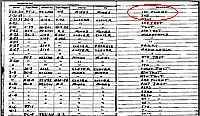
Carl Cover's log
courtesy Carl Cover II
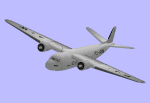
Flight Simulator Wakago.
Info and some pictures from
Luftfahrtmuseum


Spitting Image: Fokker F24 - Douglas DC5
 |
 |
 |
| DC-5 PH-AXB | Boschduif | |
 |
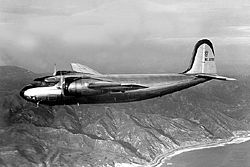 |  |
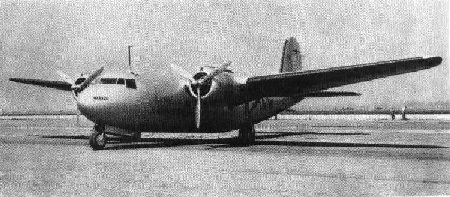 |


F-24
The contemporary F-24 was designed to be Fokker's first all-metal aircraft.
The many similarities in design between these two types are nothing less than striking. Fokker started designing the F24 in 1939, but with the 1940 German occupation of Holland, no one has ever been built. It was finally used for the development of the F-27 Friendship, with the F-VIIb tri-motor the best-known civilian Fokker types. As the first F27 flight was not before 1955, the F24 must have been far ahead of its time. Comparing the Fokker and the Douglas designs, the F24, with the same Wright Cyclone engines, seems more efficient:
| F24 | DC5 | |
| wing span (m) | 28.50 | 23.77 |
| length | 20.70 | 19.05 |
| height | 5.20 | 6.05 |
| cruise speed (km/hr) | 330 | 325 |
| max. take-off weight (kg) | 13250 | 9072 |
| empty weight | 8500 | 6202 |
| range | 1200 | 2575 |
| number of passengers | 24 | 16-22 |
More Famous Aircraft
Douglas Aircraft
from start to finish
FS2002/2004 FSDS V2 24 model
KLM's



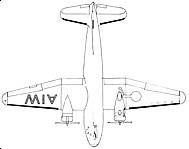 |
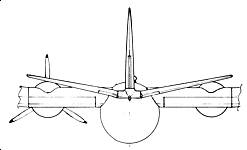 |
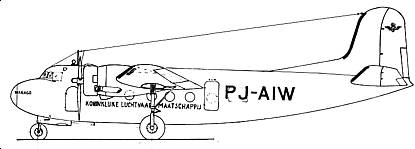 |
Modelbouwers
SEARCH this site or the Web

copyright © by
all rights reserved
